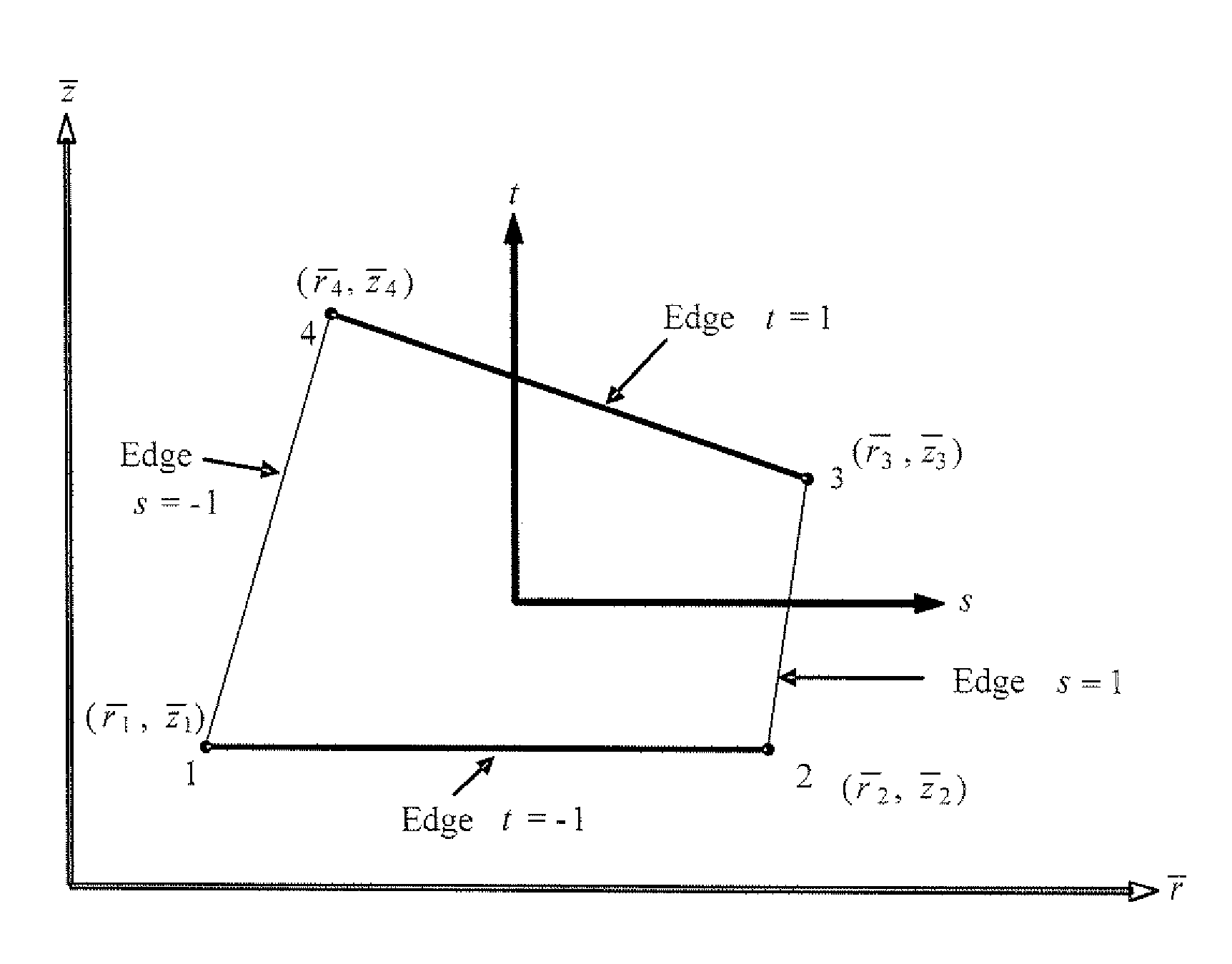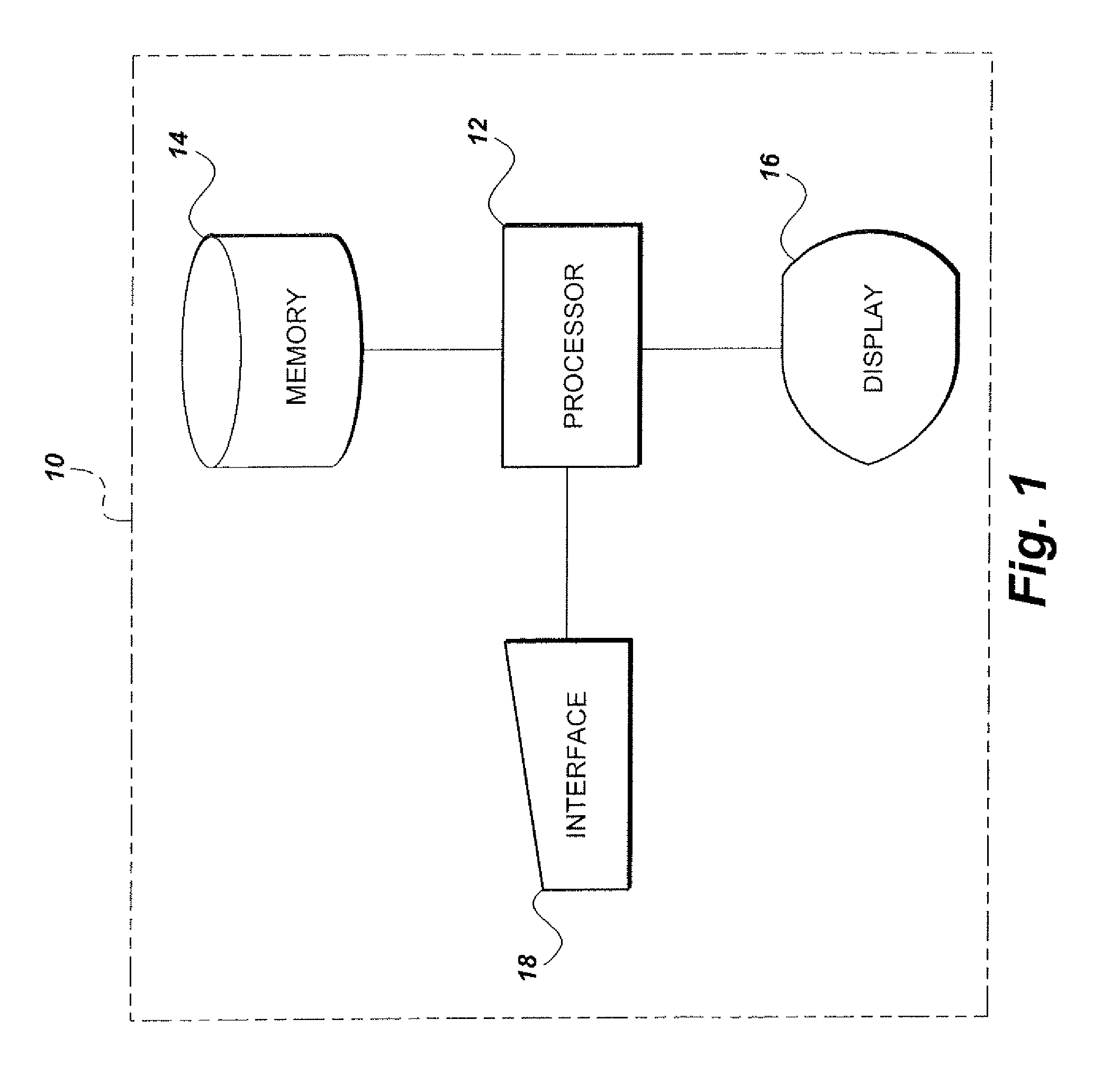Method of modeling thermal problems using a non-dimensional finite element method
a non-dimensional finite element and thermal problem technology, applied in the field of computerized methods and systems for modeling thermal systems, can solve the problem that conventional finite element techniques are only valid for a specific problem
- Summary
- Abstract
- Description
- Claims
- Application Information
AI Technical Summary
Benefits of technology
Problems solved by technology
Method used
Image
Examples
Embodiment Construction
[0053]The present invention relates to a computerized method of modeling thermal problems using a non-dimensional finite element method. Particularly, the non-dimensional finite element method relies on the variational principle. The variational principle specifies the total potential of the system, given by a scalar quantity Π, which is defined by an integral form for a continuum problem. The solution of the continuum problem is a function that makes Π stationary with respect to the state variables. The governing equation of the problem is used to calculate the potential Π.
[0054]The governing differential equation for steady state heat conduction in three dimensions for an orthotropic material is given as:
[0055]kx∂2T∂x2+ky∂2T∂y2+kz∂2T∂z2+G=0(1)
with the following boundary conditions on surfaces S1, S2 and S3, respectively:
[0056]{T=Tbkx∂T∂xl^+ky∂T∂ym^+kz∂T∂zn^+q*=0kx∂T∂xl^+ky∂T∂ym^+kz∂T∂zn^+h(T-T∞)=0}(2)
where, kx, ky and kz are the thermal conductivities in the ...
PUM
 Login to View More
Login to View More Abstract
Description
Claims
Application Information
 Login to View More
Login to View More - R&D
- Intellectual Property
- Life Sciences
- Materials
- Tech Scout
- Unparalleled Data Quality
- Higher Quality Content
- 60% Fewer Hallucinations
Browse by: Latest US Patents, China's latest patents, Technical Efficacy Thesaurus, Application Domain, Technology Topic, Popular Technical Reports.
© 2025 PatSnap. All rights reserved.Legal|Privacy policy|Modern Slavery Act Transparency Statement|Sitemap|About US| Contact US: help@patsnap.com



